Average sizes and life expectancy for this breed:
Korats are a rare cat breed even in their native country of Thailand. Because of their uniquely delicate nature, they are greatly loved by Thai people who regard them as "good luck" cats. Their overall appearance is of a silver-blue coat with a heavy silver lustre, combined with a medium-sized, hard-bodied, and muscular body.
In their homeland Thailand, the Korat is recognized as the Si-Sawat cat. Their name originates with King Rama V of Siam, who questioned when presented with this beautiful cat what kind it was and was told it was from a high plateau in northeast Thailand called Korat.
This cat breed is considered a symbol of good fortune by the Thai people. Many good luck traditions feature the Korats. They are the colour of silver, meaning wealth; and they are the colour of rain clouds with eyes the shade of young rice, meaning good crops. What’s more, the gift of a pair of these Si-Sawat cats to the newlyweds is a sign of a good marriage.
The Korat is a friendly and people-oriented breed that loves being around humans. They desire companionship from their families, and because of this, the Korats do not like being left alone for long periods of time or ignored. If ignored, they will become timid and reserved. They develop a strong bond with their families and are very affectionate. Because they crave attention, you will often find Korats on the lap of their human companion.
Korats commonly get along with other animals but note that they have a tendency to become jealous when they think that other pets receive more love and attention from their families. They enjoy playing and show strong loyalty and love; that is why they are a good fit for families.
They are gentle and will never pass up snuggling on a warm lap. Still, Korats are active, playful, and intelligent. They love interactive play with their human companions and can play a fetch game for hours.
Korats love attention and like to think that they are the ones in charge. An energetic and curious cat breed, they want to discover and explore every corner of their environment. Korats can leap high to find the best place to perch, such as the top of furniture or a cupboard where they like to observe their area unobstructed.
See available kittens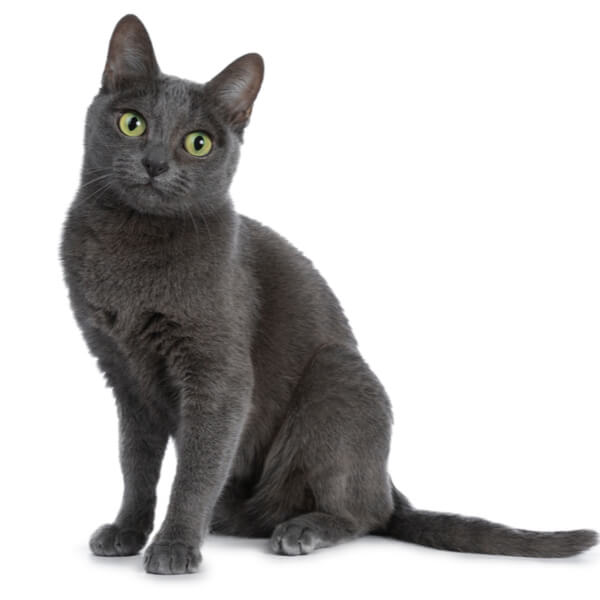

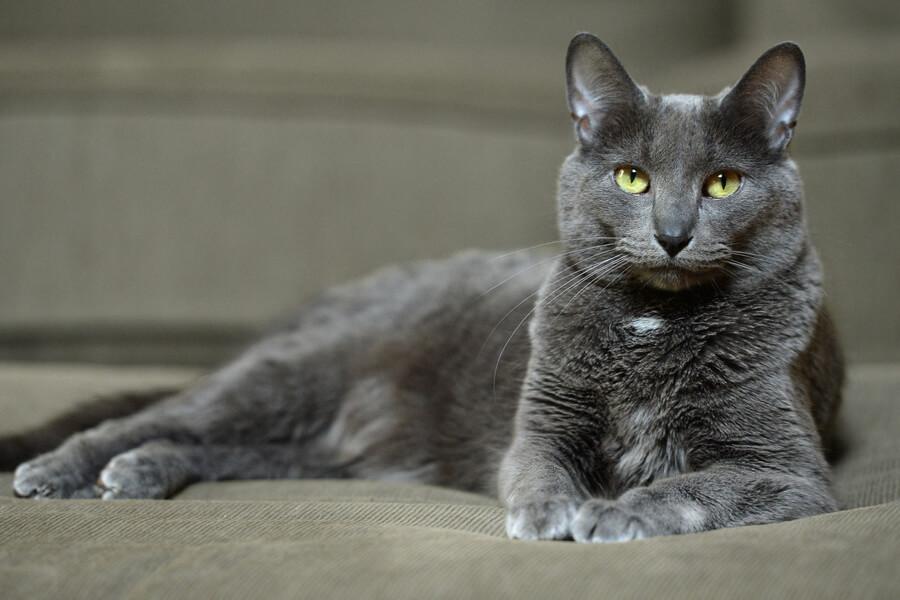


The Korat was discovered in Ampur Pimai, Korat province in Thailand. The earliest identified record of the Korats appears in The Cat-Book of Poems or Smud Khoi of Cats, which was produced between 1350-1767 during the Ayudhya Period of Siamese History. This book presents the 17 "good luck" cats of Thailand, which includes the Korat. It is now presently located at the National Library of Thailand in Bangkok.
It's uncertain when Korats first came to the West. However, in 1896, there was a cat that looked like a Korat exhibited at a cat show in England. Whether it was actually a Korat or basically a self-blue Siamese, it is still not known.
The first known Korats that were imported into the United States arrived in 1959. In 1966, The Cat Fanciers Association recognized and accepted the cat breed as championship status.
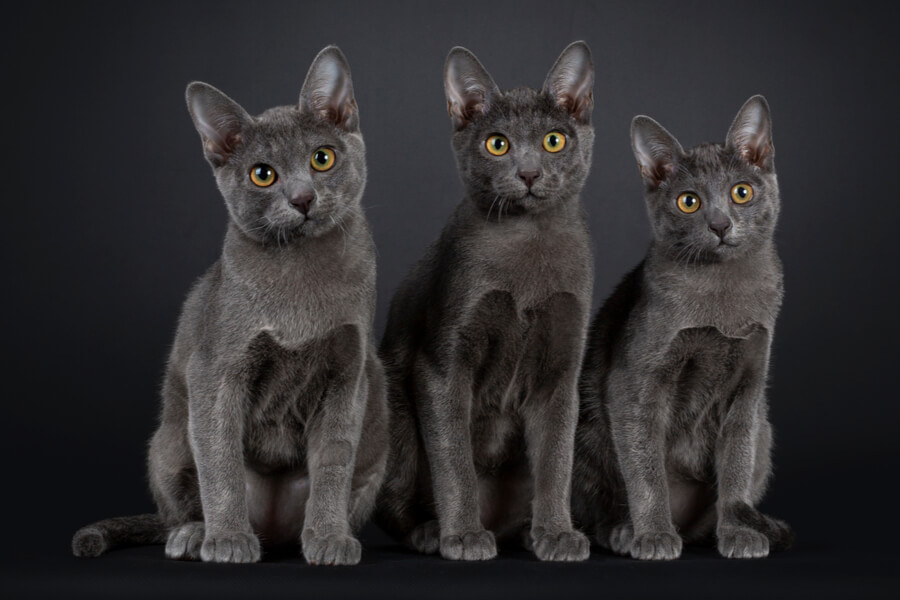
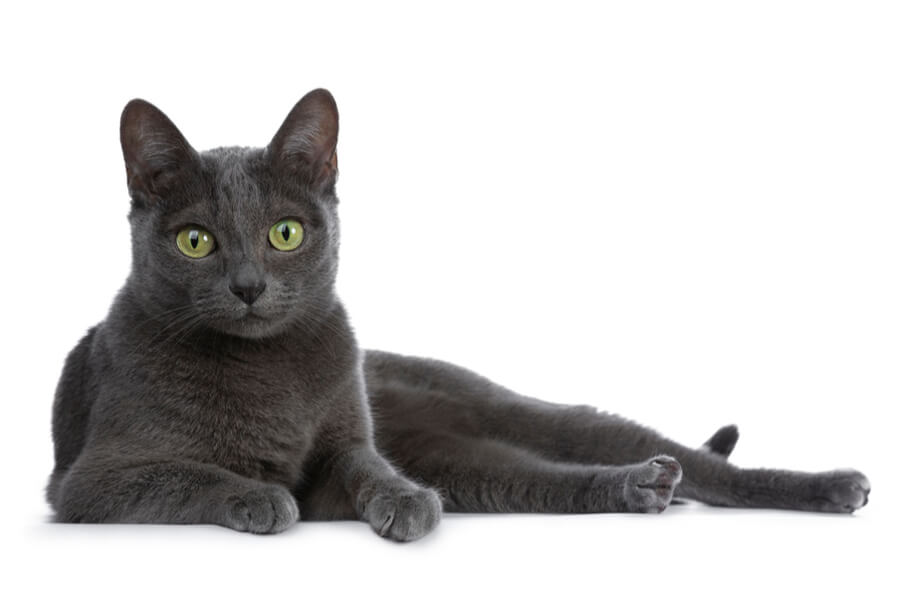
The Korat has a distinctive colour, characterised as silver-tipped blue, which gives it a gorgeous shimmer. The colour appears to absorb light, which produces a "halo" effect. Their coat is short, single and close lying. Their hair does not glide off when they are petted or stroked, so most people with cat allergies find their closeness bearable. The Korat only comes in the silver-tipped blue colour.
The Korat has a one-of-a-kind head structure that is based on a "heart shape." There are a total of five hearts associated with Korats. Their head comprises three of these heart-shapes. The first heart can be seen by looking straight at the Korat, appearing as a Valentine-shaped heart on their head.
The second one is found by looking down over the top of their head, and the third, which is associated with their head, is their nose. The fourth is located in the muscular area of their chest when they are in a sitting position. The last and the most commonly forgotten heart is the one inside them. As the Korat matures, the heart shapes become more visible.
The Korat's body is semi-cobby, with a tapering at their waist. They do not appear to have much mass but are unexpectedly hefty. The bulk of their weight is carried towards the front through muscular, rounded, well-developed shoulders. Their relatively short neck is heavy, connecting to their broad chest, with their shoulders slightly wider than their chest.
Korats grow gradually and can take up to five years to reach their full maturity. Their eye colour also takes time to develop. As kittens, they have blue eyes. This then changes to amber with a green tinge around their pupils in their teenage years. Finally, they change to peridot green when they are two to four years old. Compared to fine wine, Korats get better with age.
The bright and opinionated Korat is possessive of their family. They like to stay close by and won't leave them for visitors. They give their hearts to one or two people they prefer or with whom they spend most of their time. Still, they are certainly eager to accept affection from others too.
This cat breed is not a loner and they do best with companionship, whether from a human or another animal. According to stories, traditionally, they were always given in pairs, as they don't like being alone. A Korat often left alone or ignored may develop behavioural problems such as separation anxiety.
This cat breed is energetic and enjoys playing fetch, learning tricks, and even walking on a leash. It's not difficult to teach Korat cats household rules, but make sure to reward them with petting or a treat.
If you currently have multiple cats at home, make sure to have plenty of toys to go around. Korat cats are not the best at sharing, so they can be persistent about giving up their toys or other objects that they view as theirs.
These beautiful cats have remarkable senses of sight, hearing and scent. They are gentle cats that move cautiously and dislike loud or harsh noises. Some Korats have an extraordinarily quiet demeanour, while other cats are "chatty", expressing themselves through meows and chirps. Every Korat has a wide array of vocabulary – from a soft chirp to a full meow. However, they usually speak when they have something to express or need to alert you to their needs.
Choose a Korat if you love having a lap cat. They will be pleased to fulfil this yearning any time of the day.
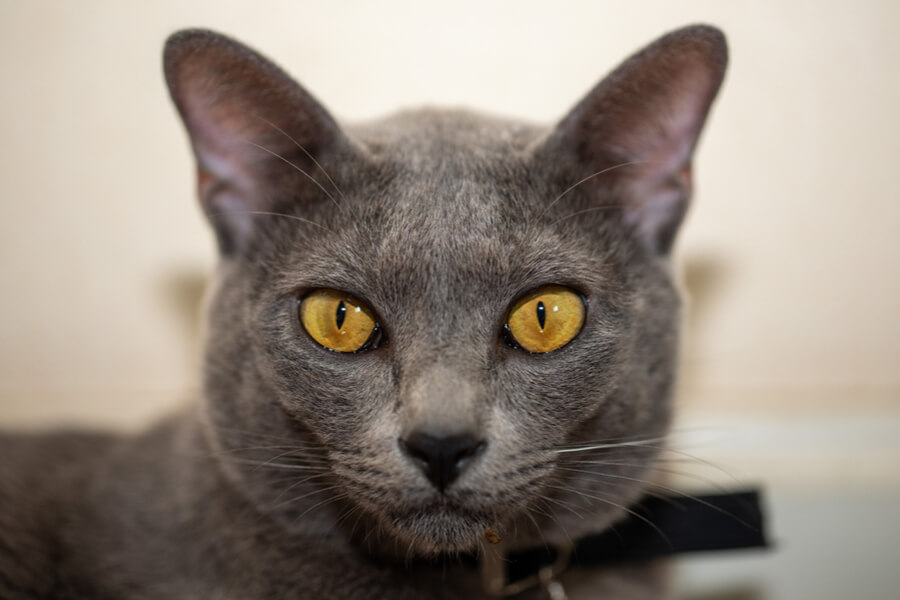
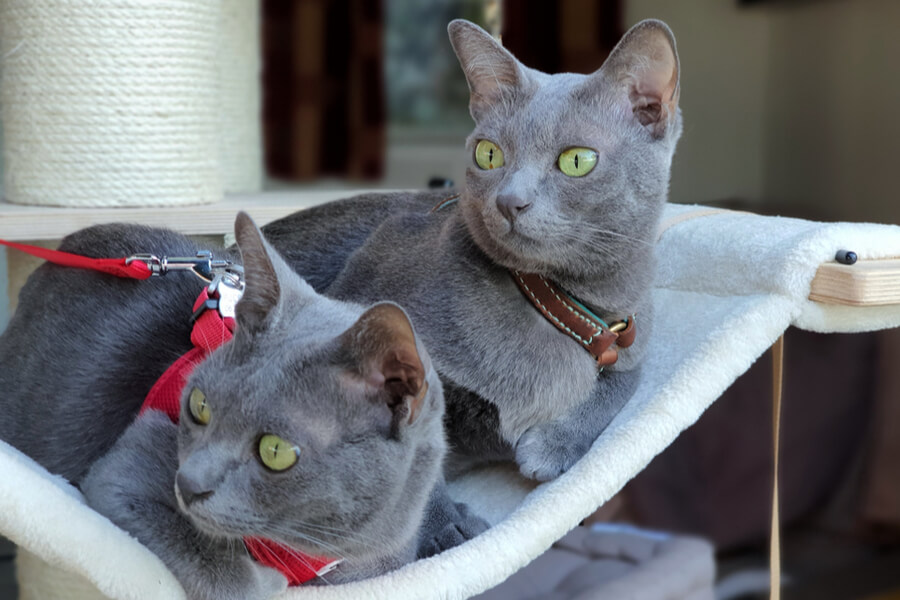
When a Korat is appropriately socialised and trained during kittenhood, they will bloom to be a well-mannered and well-rounded feline companion. These affectionate and approachable cats are very sociable, loving and become strongly devoted to their human companion.
The Korat is recognized as a highly intelligent cat who can learn new tricks and commands extremely easily and quickly. This includes playing ball and retrieving toys with their human companion. Because they are so bright, Korats like to be kept busy and enjoy being involved in everything around their environment. If a Korat gets bored, they find their own ways of entertaining themselves, leading to mischief around the home.
Challenge their intelligent minds and keep them attentive by teaching them commands, tricks and games. Give them many puzzle toys that will reward them with treats or kibbles when they learn how to operate them. Korats are bright and adore the love and attention of being clicker-trained and taught tricks.
Korats' coats are easy to groom and maintain because of their short-hair and lack of undercoat. Weekly brushing or combing in the summer is all you need to eliminate loose hair and keep their coat clean and in excellent condition. During winter, every other week, brushing or combing is sufficient. Their hair does not float off when stroked, making these affectionate cats more compatible with people with cat allergies. Bathing is not typically necessary, nor is professional grooming.
Brush their teeth weekly to prevent periodontal disease. Trim their nails twice a month or when needed. For their eyes, wipe the corners with a soft, damp cloth to eliminate any eye discharge. Make sure to use a separate part for each eye to avoid the risk of spreading any eye infection.
Check their ears weekly. If they look dirty, wipe them with a cotton ball or soft damp cloth moistened with a vet-approved ear cleaner. If the ear has a foul odour, it is best to contact your vet for treatment.
Their litter boxes should always be clean as they are precise about bathroom hygiene. If left unclean, they tend to use other places in the house.
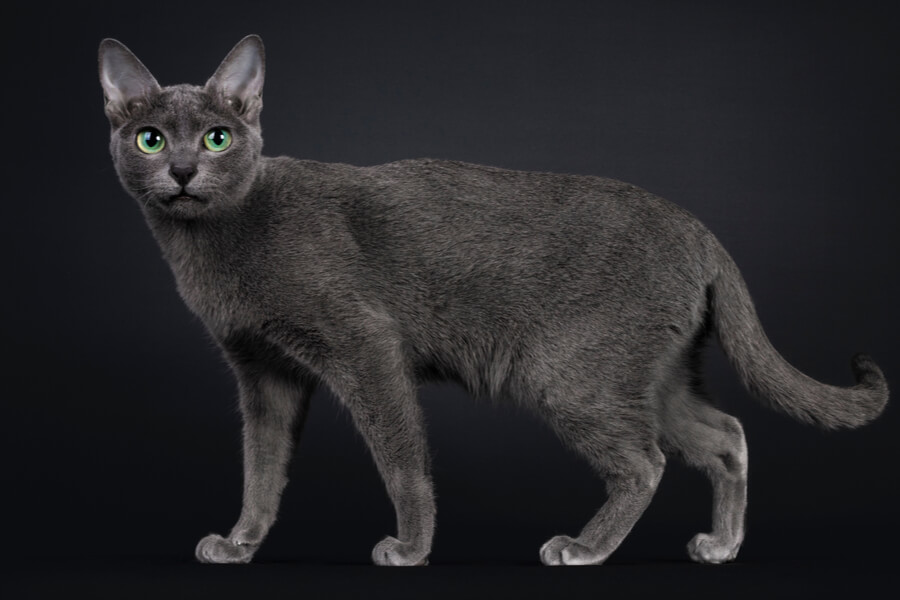
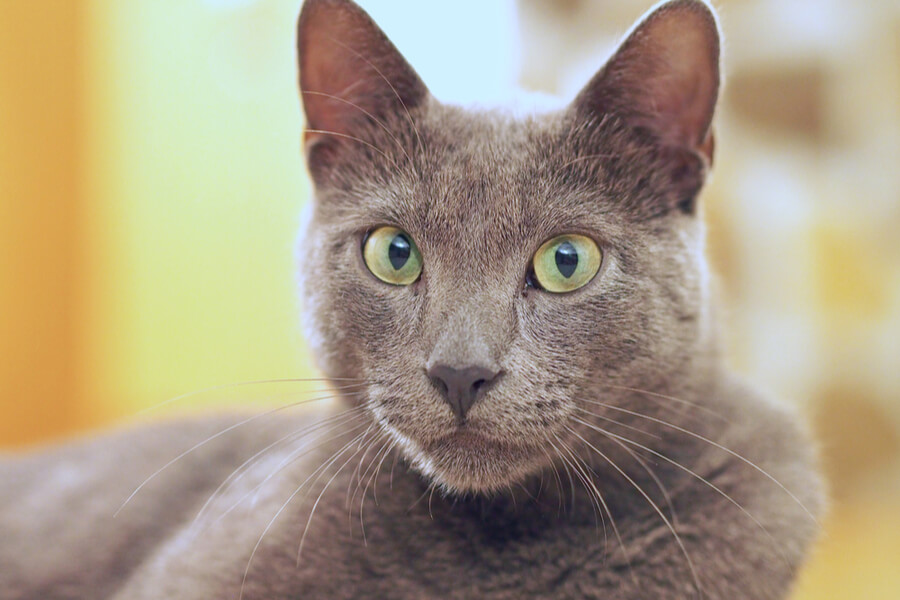
Korats are generally healthy. Their life expectancy is between ten to fifteen years with a high-quality diet, proper care and adequate exercise. However, this breed is susceptible to GM1 and GM2 Gangliosidosis. This deficiency occurs when cats lack particular enzymes essential for their nervous system's proper functioning and can cause paralysis. Some Korats can also be susceptible to kidney disease and hyperthyroidism.
It is possible to test cats for this inherited enzyme deficiency so we highly recommend you only buy a Korat from a registered breeder who runs DNA tests on their cats. Seeing proof that your new Korat does not have a genetic condition like this will put your mind at ease and ensure your cat lives a long and healthy life.
The welcoming and friendly Korat enjoys playing. That's why they are an exceptional choice for families with children. They will play fetch like any retriever, learn tricks quickly, and they love attention from children who treat them well. However, always supervise younger kids to avoid accidents and ensure they don’t hurt the cat by pulling their fur or twisting their tail.
Korats can live well with other cats and cat-friendly dogs as long as they get plenty of individual attention. Moreover, introduce pets gradually and in controlled environments to ensure that they learn to get along well together.
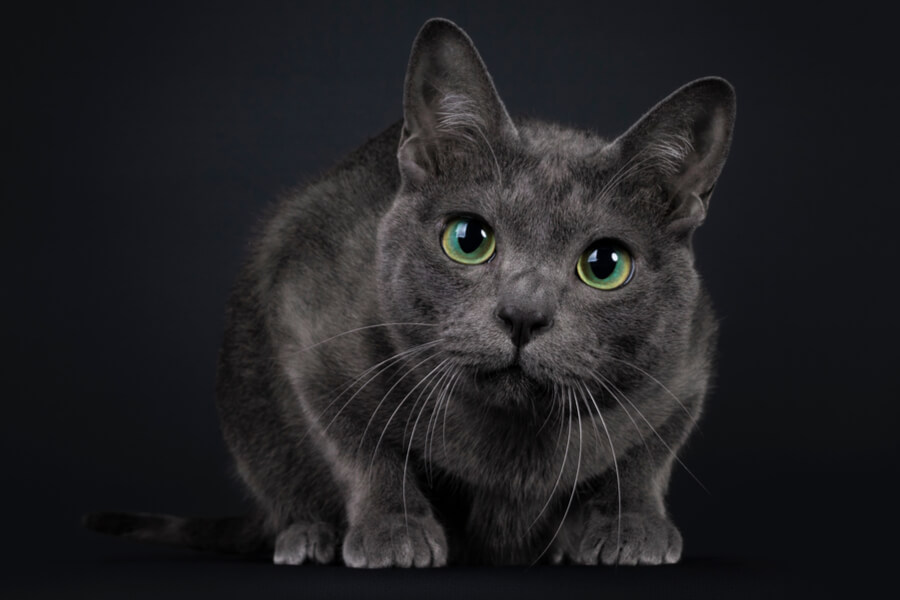
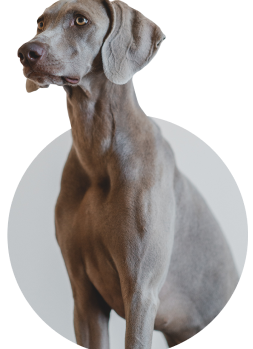
We can connect you with Breeders that are specialized in this particular breed.
See available kittens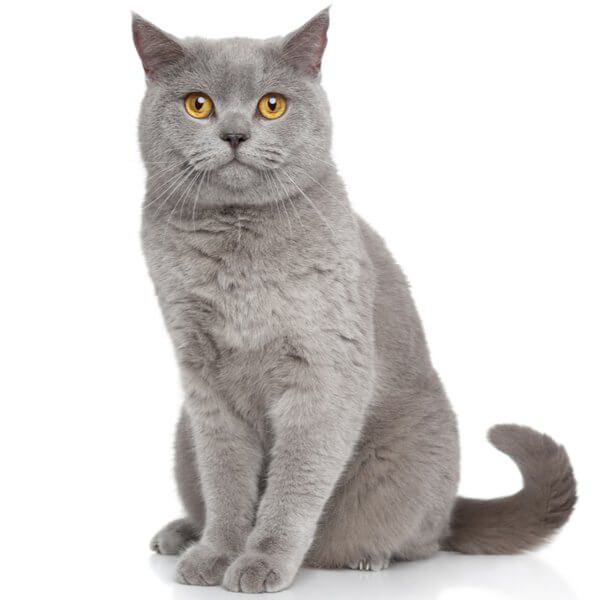
United Kingdom
Size : Medium
Coat : Short
Registration : GCCF, TICA, CFA, FIFe
Vocality : Low
Hypoallergenic : No
Grooming : Once a Week
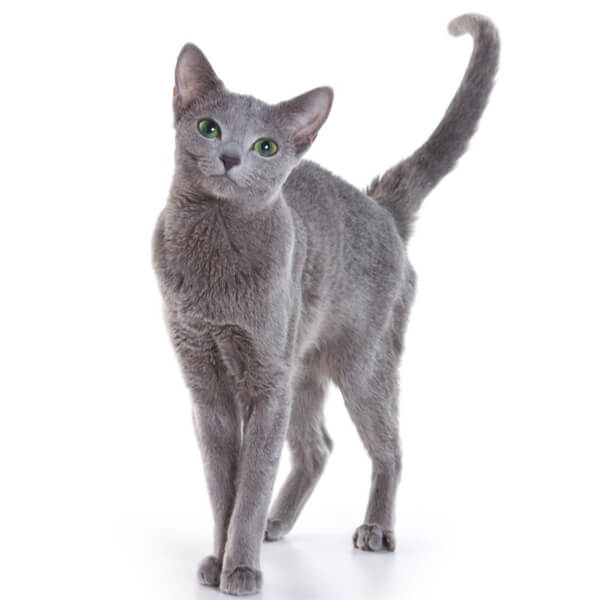
Russia
Size : Medium
Coat : Short
Registration : GCCF, TICA, CFA, FIFe
Vocality : Medium
Hypoallergenic : Yes
Grooming : Once a Week
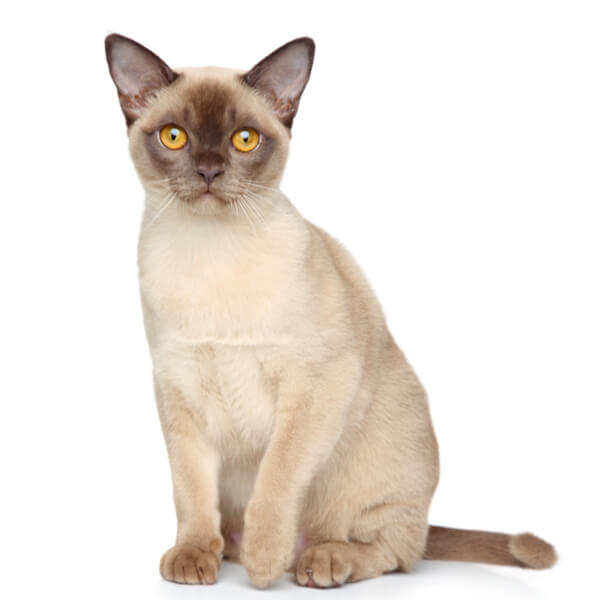
Myanmar
Size : Medium
Coat : Short
Registration : TICA, CFA, FIFe
Vocality : Medium
Hypoallergenic : Yes
Grooming : Once a Week

Thailand
Size : Medium
Coat : Short
Registration : TICA, CFA
Vocality : High
Hypoallergenic : No
Grooming : Once a Week


Need some advice?
Whether you're a first time pet owner, an experienced pet owner, a new or long-time breeder, or just curious about pets, we've got you covered!
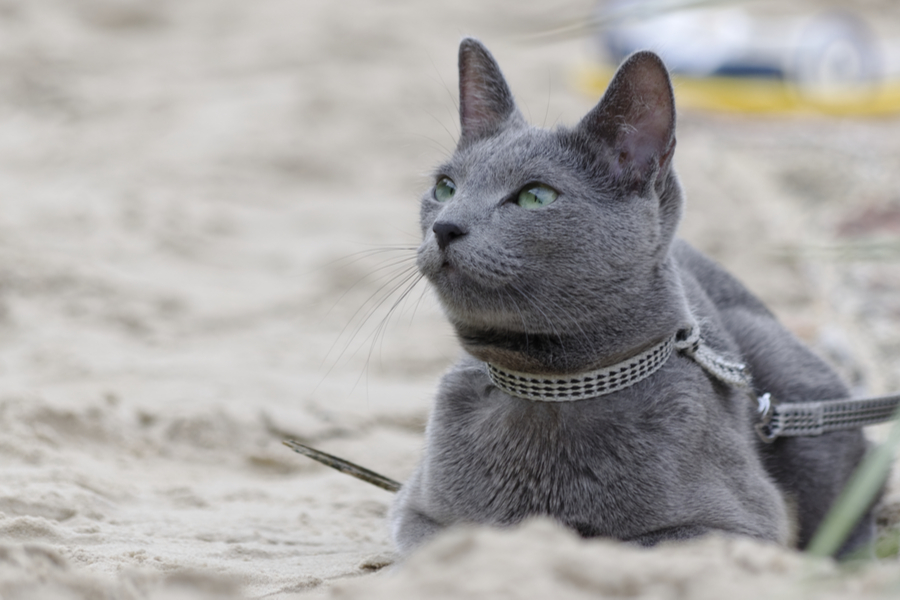
January 17, 2024
What Is The Personality Of Russian Blue Cats?
Russian Blue cats are most known for their distinctive shimmery blue-silver coat and piercing green eyes. However, this breed’s calm and gentle temperament is what makes them shine the most in the feline world.
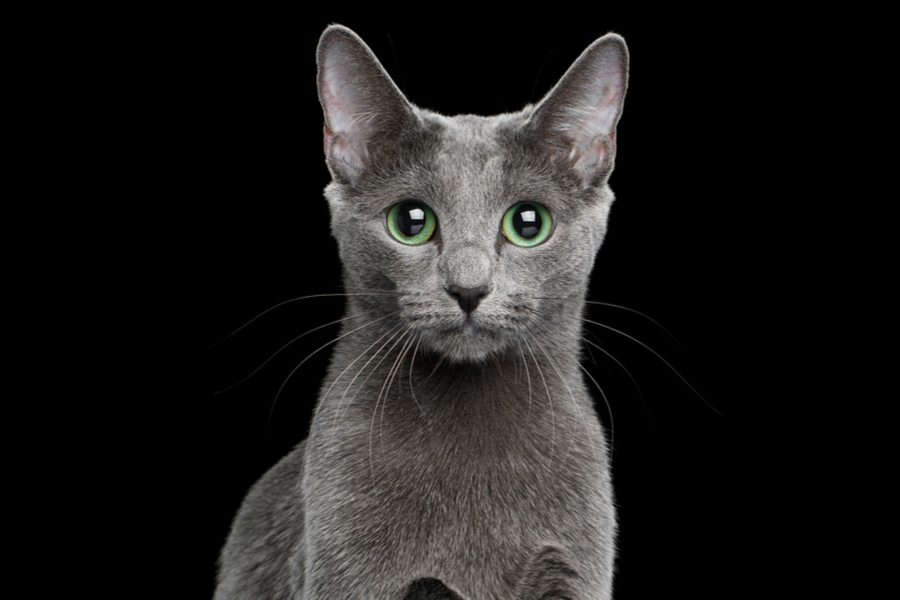
January 17, 2024
10 Facts About Russian Blue Cat Breed
Russian Blues are one of the most aesthetically stunning cat breeds, with a gorgeous plush silvery coat and vibrant green eyes. However, it’s not only their appearance that is beautiful; their nature is too.
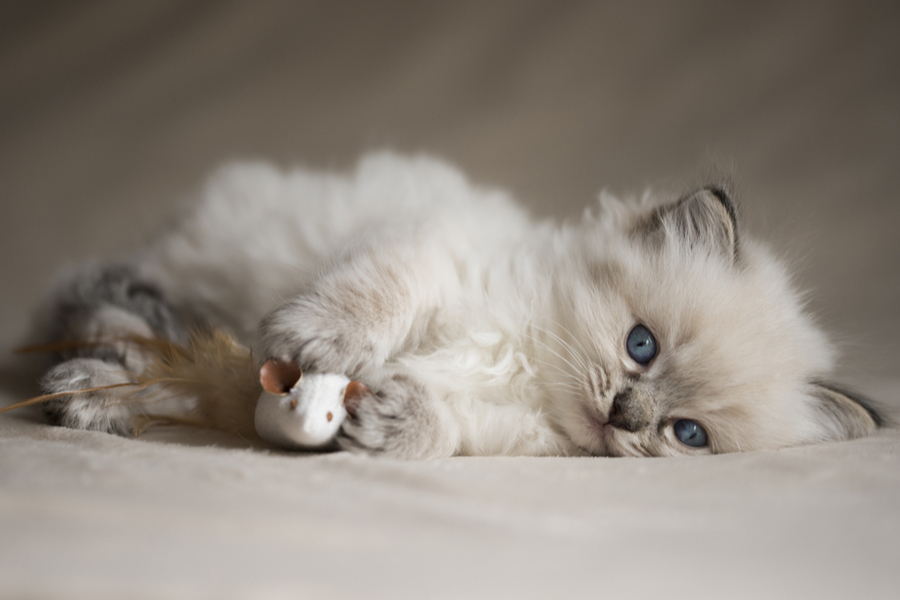
January 17, 2024
How To Choose The Right Cat Breed for You
Cats can make the most fantastic animal companions; they are adorable, friendly, and loving. However, not all felines are created equal. There are many different breeds, of which each has its unique personality traits.
Need some help?
Contact us to speak to our friendly advisor, who will gladly help you find your dream pet!



We are registered in England and Wales under registration number 12568840,
and our registered office is at 58-60 Kensington Church Street, W8 4DB London, England.
© 2023 The Pedigree Paws